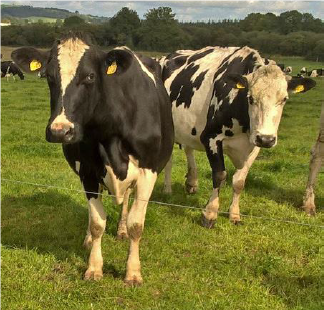Keeping on Top of Lameness
14 October 2019Lameness is one of the biggest welfare challenges in UK dairy herds. It is estimated that the prevalence of lameness is around 20% in intensively managed herds. There is always room for improvement and regular mobility scoring with protocols in place to deal with lame cows will help towards a reduction of this painful and costly disease.
Perceptions on Lameness
In a study by Horseman et al (2014) in the Journal of Animal Welfare, farmers were asked about their perceptions on what constituted a lame cow. Interestingly, the research showed that the term “lame” was usually reserved for very lame cows (score 3). Cows that showed mild lameness (score 2) were not considered lame and were more likely to be described as “walking a little light” or “her mobility is a bit impaired”. Therefore they were seen as less of a priority for treatment.
It is important that we recognise slight impairments in mobility as lameness and that prompt action is taken. Even if there is no visible sign of lameness, work with thermal imaging supports that there is likely inflammation in the foot in these cases, and that the cow would benefit from treatment, i.e. a block to take the weight off the affected claw and giving an anti-inflammatory drug. It can take up to six weeks for a sole bruise or ulcer to become visible on the sole’s surface, although the cow’s mobility will be impaired before visible signs on the foot are evident. Ultimately, prompt treatment is likely to help prevent cows that are a score 2 from being a 3, where their chance of recovery is greatly reduced.
Mobility Scoring
Many herds are mobility scored every three months as required by their milk buyer. However, many vets advocate scoring on a monthly basis. The industry standard is the AHDB Mobility Scoring System, which is a four point scale from 0 (good mobility and not lame) to 3 (obviously lame). More information can be found at:
As of the 1st October, the Red Tractor Dairy Standards will include requirements on lameness management. All farms must have protocols for mobility scoring, foot trimming and foot bathing. The new regulations also state that pain relief must be provided when treating lame cows.
Body Condition Score
Body condition score (BCS) has an impact on hoof health. Recent research by the University of Nottingham and SRUC (work funded by AHDB Dairy) showed that body condition loss was a risk factor for claw horn lesions through thinning of the digital cushion in the hoof. Cows in BCS < 2 had the greatest risk of mild or severe lameness and the risk decreased with increasing BCS. They also examined x-rays from lame and healthy feet, which showed that failure to treat claw horn lesions early led to new bone growth on the pedal bone (see pictures below). This growth is irreparable, leading to chronically lame cows with little chance of recovery.
Normal Pedal Bone
New Growth on Pedal Bone in Lame Cow
Photos courtesy of AHDB Dairy
This research emphasises the importance of nutritional management in early lactation to minimise body condition loss and maintain the protective nature of the digital cushion. A BCS of 2.5 is considered optimal for reducing the risk of claw horn lesions. Regular mobility scoring to monitor progress and promptly treat affected cows, even if lameness is very mild, will help protect long-term hoof health, performance and longevity in the herd.
Lorna MacPherson, lorna.macpherson@sac.co.uk
Sign up to the FAS newsletter
Receive updates on news, events and publications from Scotland’s Farm Advisory Service



